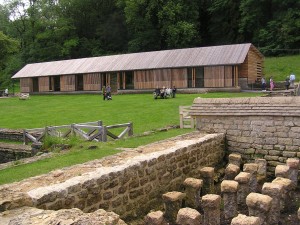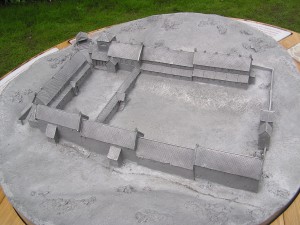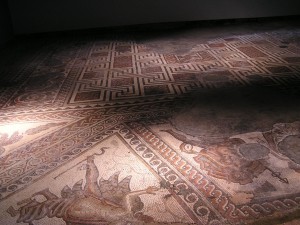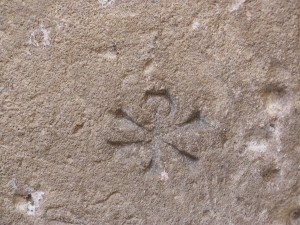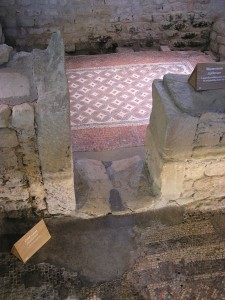The Roman villa at Chedworth, near Cirencester, was abandoned in the fifth century. The roofs must soon have collapsed, and local builders seem to have helped themselves to the stonework, little of which remains. By the time of its romantic rediscovery in 1864, the entire site had been buried under woodland.
The surviving evidence at Chedworth is of a luxurious house that had enjoyed its heyday in the fourth century. It had grand reception rooms, under-floor heating, a pair of bath-houses and fine mosaic floors that are still largely intact.
Even in the century of Constantine the Great (the first Christian emperor), the traditional pagan religion had been observed there. The mosaic floor of the triclinium (dining-room) includes an image of Bacchus embracing Ariadne and it was overlooked, from special bases, by statues of Diana and of Lar, the household god. Another prominent feature (well preserved today) was the nymphaeum, a shrine to the nymphs, that had been raised above a spring at the side of the house. (Chedworth Roman Villa, National Trust Souvenir Guide, pp.5, 8, 18-19, 38-9.)
Despite Constantine’s Edict of Toleration and the example of most of his family, Christianity was still the religion of a tiny minority, particularly in the West. There had even been an ‘Apostate’ emperor, Constantine’s nephew Julian, although on his deathbed in 363 Julian is said to have bitterly acknowledged the triumph of Christ: ‘Vicisti, Galilaee’ (You have won, Galilean). Throughout this period, the most obdurate pagans, ‘often at considerable cost to themselves’, were to be found among that most conservative group, the senatorial aristocracy, who would have included the owners of Chedworth.
Thereafter, as the Church was ‘showered with benefactions, and privileges, invited to undertake responsibilities, and progressively given a directive role in society’, Christianity had become ‘respectable and even fashionable’, attractive to people of all ranks. (J.N.D. Kelly, Jerome (London, 1975), pp.1-2.) One of the more unexpected converts was the owner of Chedworth.
On his orders, the nymphs had been symbolically banished from their shrine, for a coping stone from its octagonal basin was incised with the famous christogram, representing the chi and the rho which are the first two letters of Christ’s name – ΧΡΙΣΤΟΣ in Greek. It was the symbol that Constantine had had his men paint on their shields before his great victory at Milvian Bridge in 311, and it appears on fourth-century baptismal fonts (mostly portable lead tanks) that have been discovered throughout Roman Britain. (Paul Stephenson, Constantine: Unconquered Emperor, Christian Victor (London, 2009), pp.1, 5, 135-6, 232-3.) An old pagan altar had been tossed into the Chedworth shrine, which had probably been converted by its owner to use as a baptistery.
Christianity at Chedworth had, however, been an aberration. In the late fourth century, there had been a resurgence of paganism in the West. The coping stone had been peremptorily removed from the nymphaeum, and relegated, as building material, to the steps of the west bath-house. Christianity was to be no comfort to those who had to face the final abandonment of the villa.
The swallows still nest in the eaves at Chedworth, as they would have done in Roman times. Surprisingly, the site teems also with specimens of the rare ‘Roman snail’ (helix pomatia), a protected species that is mainly found today in the Chilterns and on the North Downs. At Banstead Woods, near Epsom, these creatures, distinctive by their size and pale colour, are being poached at an alarming rate, and are apparently fetching high prices from French restaurateurs (Daily Telegraph, 27 June 2012). At Chedworth, where they loiter unmolested by the outdoor tables of the café, there is something almost reproachful about their presence. ‘You brought us all this way,’ they seem to say. ‘You used to think us a delicacy in your triclinium, milk-fed and roasted in sow’s udders. Why don’t you want to eat us any more?’
